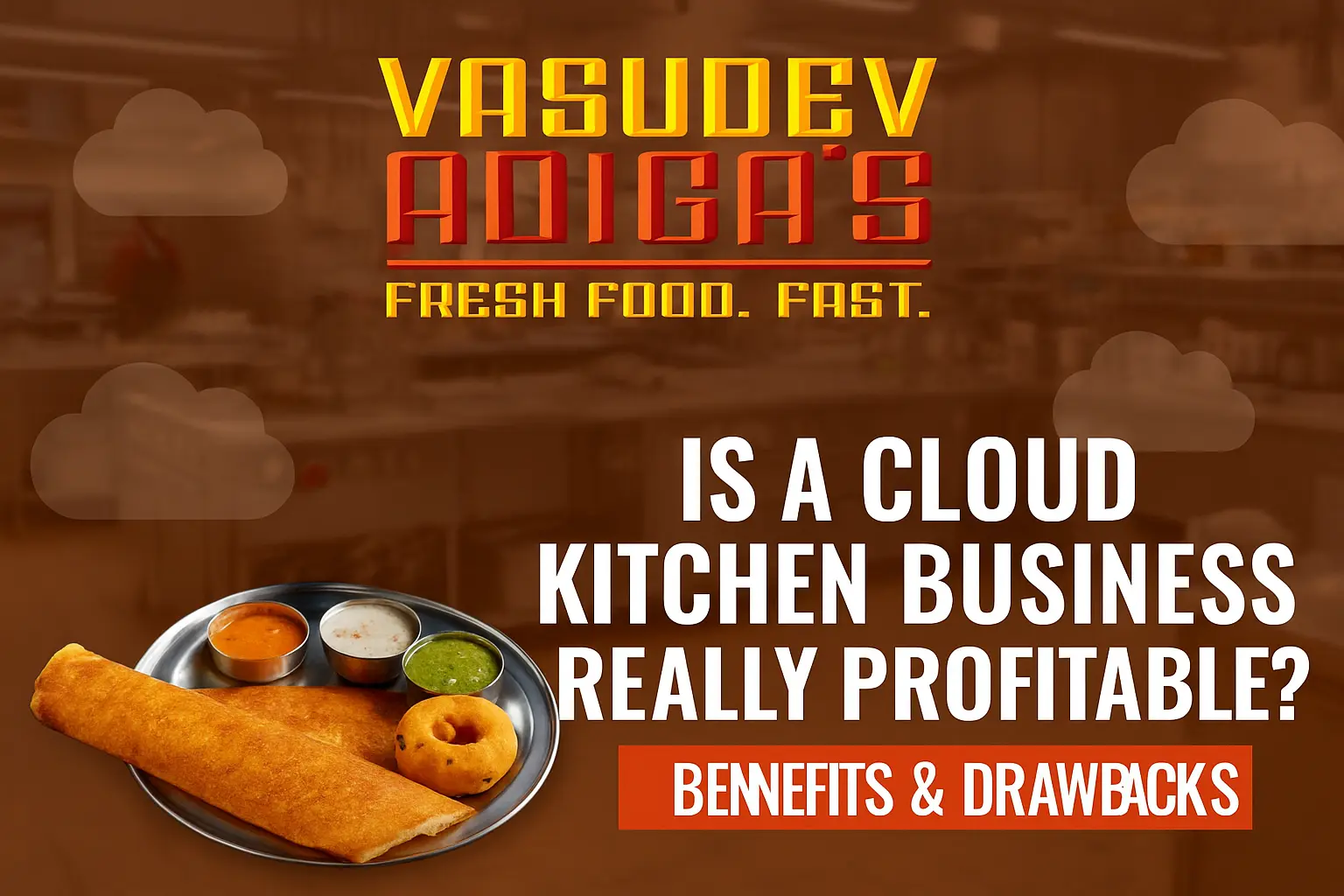Is a Cloud Kitchen Business Really Profitable? Benefits and Drawbacks Explained
Cloud kitchen business profitability has become one of the hottest topics in India’s food industry. With the growth of online food delivery platforms like Zomato and Swiggy, more entrepreneurs are asking: Is running a cloud kitchen really profitable? The answer depends on how well you understand the concept, manage costs, and market your brand. In this blog, we will explore the benefits and drawbacks of cloud kitchen business profitability so you can decide if this model is right for you.
What is a Cloud Kitchen and How It Impacts Cloud Kitchen Business Profitability?
A cloud kitchen, also called a “virtual kitchen” or “ghost kitchen,” is a delivery-only restaurant. Unlike traditional restaurants, it does not have dine-in space or customer seating. Orders are received through food delivery apps, websites, or brand apps, and meals are prepared in a commercial kitchen for doorstep delivery.
If you’ve ordered food online recently, chances are it came from a cloud kitchen business. Brands like Vasudev Adiga’s are already exploring digital-first strategies to serve customers faster and better.
Why is Cloud Kitchen Business Profitability a Hot Topic in India?
India’s online food delivery market is growing rapidly, with millions of daily orders placed via Swiggy and Zomato. Entrepreneurs see cloud kitchens as a low-cost entry point into the restaurant industry because they don’t require expensive real estate or lavish interiors.
According to industry reports, cloud kitchens can increase restaurant profits by reducing operational costs by up to 30%. This makes cloud kitchen business profitability an attractive opportunity for new and established brands.
Benefits of Cloud Kitchen Business Profitability
1. Lower Setup Costs
Traditional restaurants need large spaces, furniture, and interior design. A cloud kitchen requires only a functional kitchen, cooking equipment, and digital ordering systems. This drastically lowers the initial investment.
2. Higher Profit Margins
Since cloud kitchens save money on rent, staff, and utilities, the profit margins are higher compared to dine-in restaurants. A well-managed cloud kitchen can operate with 20–30% more efficiency.
3. Easy Scalability
Adding more brands or menus to a cloud kitchen setup is easier than opening a new restaurant. You can run multiple food concepts under one kitchen roof.
4. Access to Delivery Platforms
By partnering with apps like Zomato and Swiggy, cloud kitchens can reach a wide customer base without spending huge amounts on marketing.
5. Focus on Core Business
With no dine-in operations, the focus is purely on food preparation and delivery. This improves food quality and customer satisfaction.
For example, brands like Kouzina Food Tech have successfully scaled cloud kitchens across India with this strategy.
Drawbacks Affecting Cloud Kitchen Business Profitability
1. High Dependency on Delivery Apps
Most cloud kitchens rely heavily on Zomato, Swiggy, and other platforms. These apps charge high commissions (20–30%), which affects overall cloud kitchen business profitability.
2. Intense Competition
The low entry cost means more players are entering the market every day. Standing out requires strong branding, unique menus, and consistent customer service.
3. Marketing Expenses
Even without dine-in, cloud kitchens must invest in online advertising, SEO, social media, and promotions to attract and retain customers.
4. Lack of Customer Interaction
Restaurants with dine-in spaces build customer loyalty through face-to-face service. Cloud kitchens miss out on this, making customer retention a challenge.
5. Quality Control Challenges
Managing multiple brands or delivery volumes can affect food consistency and delivery times if not handled well.
Is Cloud Kitchen Business Profitability Sustainable in India?
The profitability of cloud kitchen businesses depends on factors like:
- Location (close to delivery demand zones)
- Menu pricing (affordable yet profitable)
- Marketing strategy (digital presence, social media, SEO)
- Operational efficiency (cutting food waste, managing staff, reducing costs)
Well-managed cloud kitchens can generate 15–25% higher net profits than traditional restaurants. However, poor planning or over-reliance on third-party apps can lead to losses.
Case Study: Vasudev Adiga’s and Cloud Kitchen Business Profitability
Vasudev Adiga’s is a well-known restaurant brand in India. By adopting cloud kitchen models and focusing on online delivery, Adiga’s can expand faster while keeping costs under control. Their strong brand recognition helps them stand out in a crowded online food market.
Future of Cloud Kitchen Business Profitability in India
The future looks bright for cloud kitchens because:
- Online ordering is growing rapidly.
- Food tech innovations like AI-driven delivery and automated kitchens will reduce costs further.
- Customers prefer convenience and quick delivery.
However, only businesses that maintain quality, manage costs, and build strong digital branding will succeed in the long run.
Final Thoughts on Cloud Kitchen Business Profitability
So, is a cloud kitchen business really profitable? The answer is yes, but only with the right approach. The model offers low investment, high scalability, and access to a growing online food delivery market. At the same time, challenges like high app commissions, competition, and marketing costs must be carefully managed.
If you want to explore cloud kitchen business opportunities, learn from established brands like Vasudev Adiga’s and innovative food-tech companies like Kouzina Food Tech. With the right strategy, cloud kitchen business profitability can be a reality.
